As an avid hiker, I know the importance of having a good pair of hiking boots. They provide support, stability, and protection on the trails. But how do you know when it’s time to replace them? It’s not always obvious, but there are some signs to look out for.
First and foremost, pay attention to the tread on the bottom of your boots. If it’s worn down or smooth, it’s time for a new pair. The tread is what provides grip and traction on uneven terrain, so it’s crucial to have a good grip. Additionally, if you start to experience pain in your feet, ankles, or knees while hiking, it could be a sign that your boots are no longer providing the support they once did. In this article, we’ll explore when to replace hiking boots and how often you should do it to ensure you’re always prepared for your next adventure.

Key Takeaways
- Pay attention to the tread on your boots and replace them when it’s worn down or smooth.
- If you experience pain while hiking, it could be a sign that your boots are no longer providing the support they once did.
- Knowing when to replace your hiking boots is crucial to ensure you’re always prepared for your next adventure.
When To Replace Hiking Boots
I know how important it is to have a reliable pair of hiking boots. But even the best hiking boots have a lifespan, and knowing when to replace them is crucial for both comfort and safety. Here are some signs that it’s time to replace your hiking boots:
7 Red Flags That It’s Time To Replace Your Hiking Boots
Worn-out treads: One of the most obvious signs that it’s time to replace your hiking boots is when the treads are worn out. I’ve learned the importance of paying close attention to my hiking gear, especially my trusted companions – my hiking boots. Every step on the trail matters and worn-out treads can quickly become a perilous issue. Picture this: I’m venturing through a picturesque forest trail, the sun peeking through the foliage, and the scent of earth filling the air. Suddenly, as I navigate a slightly rocky section, I feel my boots lose their grip, and my heart skips a beat. It’s that moment when I know it’s time to replace my hiking boots.
The treads on hiking boots are like the unsung heroes, diligently providing the traction and stability needed to conquer diverse terrains. Over time, countless trails and rugged landscapes can take a toll on these vital treads. As I inspect my boots after each hike, I notice the gradual wear and tear – shallow grooves and worn-down patterns – the unmistakable signs that it’s time for new hiking boots.
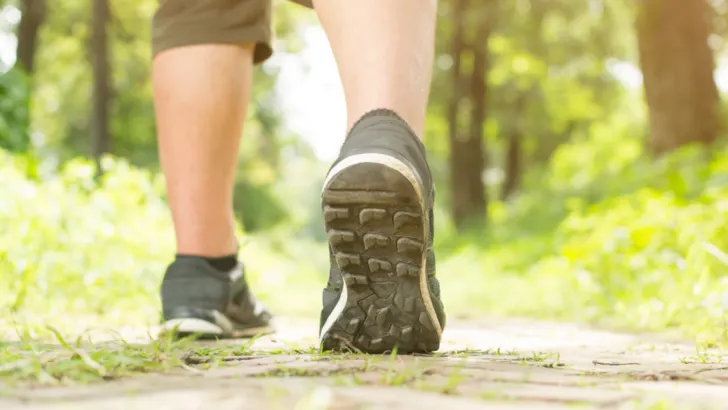
When the treads are worn out, slips and falls become genuine risks, threatening the joy and safety of my hiking experiences. That connection with the earth beneath my feet is essential, and it’s the sturdy treads that offer that reassuring connection. I’ve learned not to take this for granted. Each step on uneven terrain or slippery surfaces can make a world of difference in keeping me safe and steady throughout my journey.
Replacing my hiking boots isn’t just about aesthetics or the thrill of trying out new gear; it’s about prioritizing my safety and enhancing my connection with nature. Knowing that every new hike brings fresh challenges and diverse landscapes, I want to ensure that my feet are equipped with the best support and traction.
So, as I pack my gear for my next adventure, I make a mental note to inspect the treads of my hiking boots. I vow to stay attentive to any signs of wear, taking the responsible step to replace them when necessary. Because in the world of hiking, every step counts, and with reliable, well-treaded boots, I can embark on each new trail with confidence, knowing that I’m prepared to embrace whatever nature has in store for me.
Pain in your feet: If you start experiencing pain in your feet while hiking, it could be a sign that your boots are no longer providing the support and cushioning that they used to. This could be due to worn-out insoles or a lack of ankle support. If you’re experiencing pain, it’s time to replace your boots.
Pain in my feet while hiking is a clear indicator that something is amiss. It’s my body’s way of reminding me that my boots, once reliable and comforting, may now be showing signs of wear. The arch support that once embraced my feet may have diminished over time, or perhaps the insoles have become worn out, failing to provide the cushioning they once did.

Every step becomes a moment of introspection – a moment to acknowledge the signals my body is sending. The pain, though uncomfortable, serves as a reminder to be mindful of my gear and prioritize my well-being. The lack of support and cushioning can lead to strain on my feet, affecting not only my hiking experience but also my overall enjoyment of being immersed in nature.
I’ve learned that pushing through the pain is not the solution. Instead, it’s time to listen to my body and respond with care. Replacing my hiking boots becomes a necessary step towards ensuring that each journey is a delightful one, where discomfort is replaced by the joy of exploring without limitations.
Worn-out ankle cuffs: The ankle cuffs on hiking boots are designed to provide support and stability. With each step, I appreciate the ankle cuffs that embrace and support my ankles, providing the stability I need to conquer challenging terrains. However, after numerous treks through rocky landscapes and rugged trails, I’ve learned to pay close attention to the condition of these ankle cuffs, for they play a crucial role in my hiking experience.
It was during a serene woodland hike that I first noticed a subtle change in how my boots fit around my ankles. The once firm and supportive cuffs now seem to have lost some of their resilience. As I navigate trickier sections of the trail, I can feel a slight lack of support, and it leaves me yearning for the days when my boots were like reliable sentinels guarding my every move.
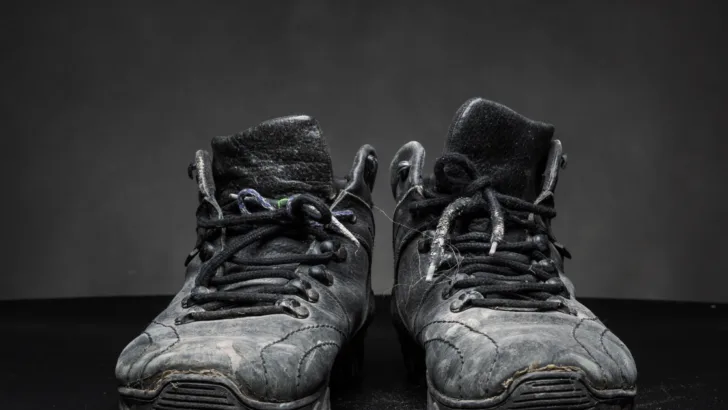
The ankle cuffs, though often overlooked, are a vital element of my hiking gear. They play a significant role in keeping my ankles aligned and supported, allowing me to confidently traverse uneven ground and steep inclines. With each step, they help maintain stability and prevent unnecessary strain on my ankles, ensuring that my adventures are enjoyable and worry-free.
But as the cuffs show signs of wear, their effectiveness diminishes, and I realize that it’s time to part ways with my current pair of boots. The realization is bittersweet, as these boots have been with me through countless memories and breathtaking landscapes. Yet, I know that replacing them is a responsible decision that will safeguard my hiking experiences in the future.
500+ miles: Hiking boots are designed to last for a certain number of miles, and once you’ve hit that number, it’s time to replace them. I’ve come to appreciate the endurance and resilience of my trusted hiking boots. They’ve carried me through awe-inspiring landscapes, challenging ascents, and unforgettable experiences. However, I’ve also learned that even the most dependable boots have their limits, and keeping track of their mileage becomes an essential part of my hiking routine.
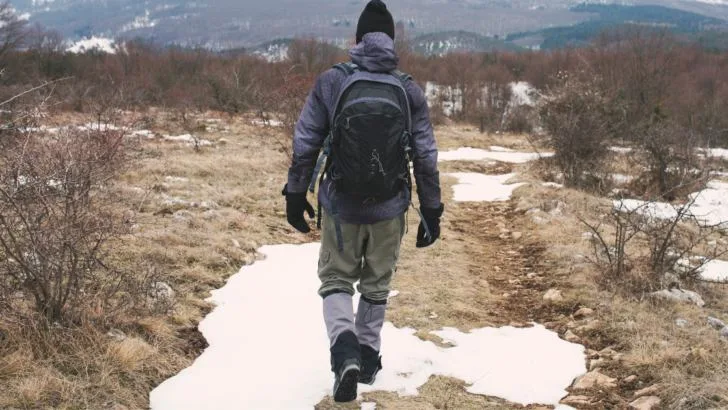
Hiking boots, like steadfast companions, are designed to withstand a specific number of miles before their effectiveness starts to wane. The materials and cushioning that provide comfort and support begin to wear down, making it essential to assess their condition regularly. The recommended guideline suggests that hiking boots should ideally be replaced after trekking 500 to 750 miles.
As I contemplate the milestones my boots have reached, I’m reminded of the incredible adventures they’ve enabled. Each mile has been a testament to their durability, and I’m grateful for every stride we’ve taken together. However, the awareness that their journey is nearing its conclusion compels me to plan for the future.
Uncomfortable fit: If your hiking boots are no longer comfortable, it’s time to replace them. As a devoted hiker who cherishes the connection between my feet and the earth beneath, I understand the paramount importance of comfortable hiking boots. They are the gateway to exploring the great outdoors with joy and ease. Yet, just like any relationship, the bond between my feet and my boots may evolve over time. As I lace up my beloved pair, I notice a subtle discomfort that wasn’t present before.
Comfort, I’ve come to realize, is the backbone of my hiking experiences. It allows me to focus on the breathtaking scenery and the soothing sounds of nature, rather than worrying about my feet. The discomfort I now feel serves as a gentle reminder that it’s time to reevaluate my boots’ fit and consider a replacement.
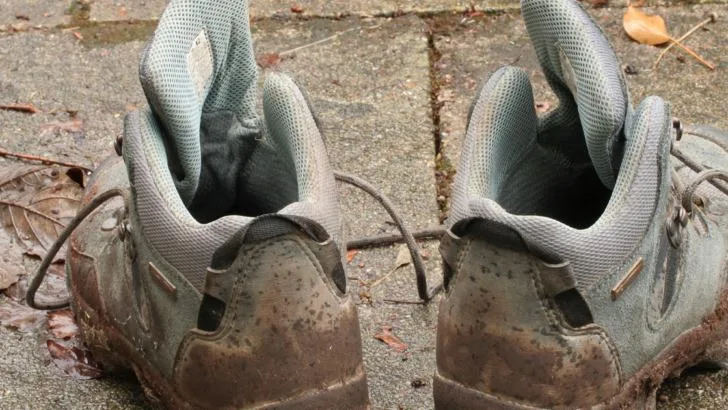
As I slip off my boots after the hike, I reflect on the miles we’ve shared and the adventures we’ve conquered. The memories we’ve created are etched into the soles, but I know that parting ways is inevitable for the sake of my hiking pleasure and safety. I value the relationship between my feet and my boots, and I want to ensure that it remains a harmonious and delightful connection.
Replacing my boots is not about discarding the past, but rather embracing the future with newfound comfort and confidence. It’s about embarking on new trails, knowing that my feet will be cradled in snug and reliable boots. While I cherish the experiences we’ve shared, I am excited for the adventures that lie ahead with a new pair of hiking boots.
Worn-out shoelaces: Shoelaces can wear out over time due to the friction of tightening and loosening them. If your shoelaces are worn out, it’s time to replace your boots.
A worn-out shoelace may seem like a minor concern, but I’ve come to realize that it’s not something to be taken lightly. It’s a sign that my boots, my steadfast companions on the trails, have been through their fair share of adventures with me. Their reliability and resilience have been tested and proven time and again, and now, it’s time to acknowledge the wear they’ve endured.
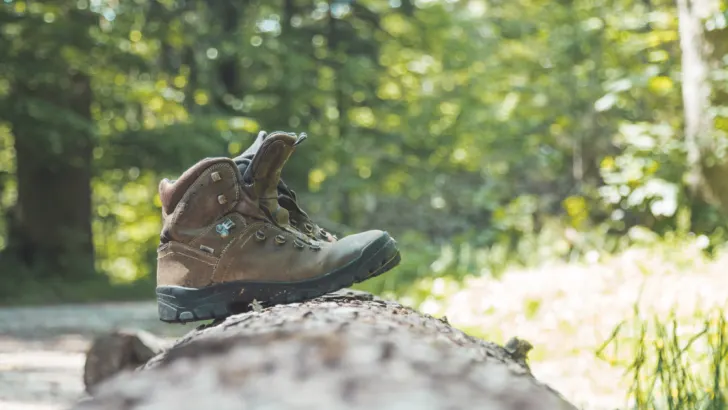
For a moment, I pause and reminisce about the trails I’ve conquered with these boots. The shoelaces have been a constant part of every hike, securely holding my feet in place and offering the stability I needed to navigate rugged terrains. It’s a testament to the journeys we’ve shared, but also a signal that the time has come for a fresh start.
The decision to replace my worn-out shoelaces goes beyond aesthetics; it’s about ensuring the safety and security of my feet during future hikes. I understand the importance of having reliable laces that will keep my boots snugly fitted throughout each adventure. Every step counts, and the last thing I want is to have my shoelaces unexpectedly give way during a challenging ascent or descent.
Loose stitching: If you notice that the stitching on your boots is coming loose, it’s a sign that they are starting to wear out. Loose stitching can lead to holes in the boots, which can let in water and debris.
Each carefully placed thread plays a vital role in keeping my boots sturdy and reliable during my adventurous escapades. As I embark on my latest hiking expedition, I can’t help but notice a subtle change in the appearance of my trusted boots – a few loose stitches peeking out from the seams.
At first glance, loose stitching may seem like a minor flaw, easily overlooked amidst the grandeur of nature that surrounds me. However, I’ve learned through experience that even the smallest imperfections can have significant consequences on the trail. The stitching in my boots acts as a fortress, fortifying the connection between the different components, ensuring their durability and resilience in the face of rugged terrain.
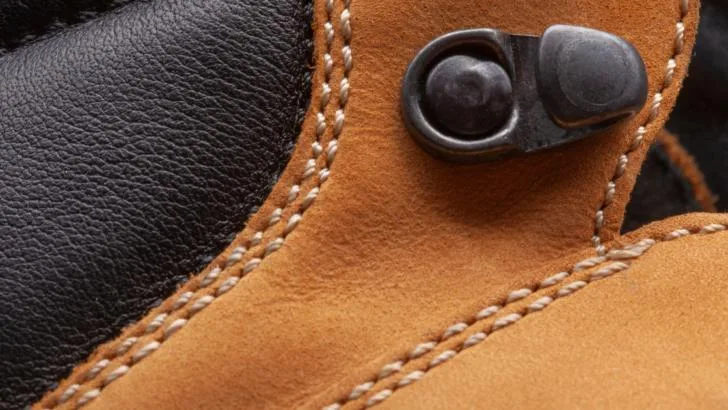
The loose stitches serve as a subtle warning, a gentle reminder that my boots have traversed numerous trails, conquering both the gentle slopes and challenging summits. With each adventure, they have been exposed to the elements, enduring the ever-changing weather conditions and the abrasive contact with rough surfaces. It’s no surprise that over time, some stitches may start to give way.
While the loose stitching may initially seem insignificant, I understand that it can pave the way for more significant issues if left unaddressed. A tiny opening may seem inconsequential, but it can be the gateway for unwanted elements, such as water and debris, to sneak into the interior of my boots. This intrusion can disrupt the comfort and protection that my boots have provided me on countless journeys.
The loose stitching is a reminder that my boots, like any loyal companions, need care and attention. Just as I wouldn’t ignore a friend in need, I recognize that addressing the issue promptly is crucial to preserving the integrity of my boots. It’s a gesture of respect and gratitude for the journeys we’ve shared and the ones we have yet to embark on.
In conclusion, knowing when to replace your hiking boots is important for both comfort and safety. Keep an eye out for these signs, and when you notice them, it’s time to start shopping for a new pair of boots!
Related Posts:
How Often You Should Replace Your Hiking Boots
As a hiker, I know how important it is to have a good pair of hiking boots. They are your best friend on the trail, and they protect your feet from the elements. But when should you replace them? Here are some guidelines to follow.
In General, You Should Replace Your Hiking Boots Every 300-500 Miles
I’ve learned that the longevity of my hiking boots is crucial to ensuring safe and enjoyable adventures. Among the various questions that linger in my mind as I lace up my trusty pair, one of the most common is when it’s time to bid farewell to these faithful companions. The answer, as with many things in the hiking world, is not a one-size-fits-all solution. Instead, it’s a delicate balance influenced by several essential factors.
The general rule of thumb, often whispered among seasoned hikers, is to replace your hiking boots every 300-500 miles. This metric provides a tangible gauge, equivalent to embarking on 10-15 weeks of hiking if one traverses 10 miles per week. As I embark on each new journey, I keep this guideline in mind as a starting point, but I’m also aware that it’s not the sole determinant of when the time is right for a replacement.

You see, the lifespan of hiking boots can be influenced by a multitude of factors that weave a unique story for each pair. Terrain, weather conditions, and hiking frequency all play a role in the wear and tear that my boots endure. For instance, treks on rugged, rocky terrains and wet, muddy paths can undoubtedly accelerate the aging process of my boots. Likewise, more frequent hiking ventures can naturally result in faster depreciation.
Why You May Need To Replace Your Boots More Often
As someone who often finds solace in conquering rugged terrains and embracing the challenges of carrying a heavy backpack, I’ve come to realize that my hiking boots bear the brunt of these adventures. These demanding conditions can certainly impact the lifespan of my beloved boots, prompting me to be even more attentive to their well-being.
When I venture into the untamed wilderness, I know that my boots may experience accelerated wear and tear, especially if the trails are strewn with sharp rocks or dense undergrowth. The unforgiving nature of rough terrain can take a toll on the soles, resulting in a worn-down tread that compromises traction and stability. As I traverse these challenging paths, I keep a keen eye out for any signs of distress in my boots.
Moreover, carrying a heavy backpack adds another layer of complexity to the equation. The extra weight places additional stress on my boots, particularly around the midsole and outsole. I understand that this added burden can contribute to the quicker deterioration of my trusty companions. Therefore, I’m vigilant in monitoring their condition, looking for any subtle signs of strain or vulnerability.
Wet conditions are also part and parcel of my outdoor escapades. Whether it’s a sudden rain shower or fording a stream, my boots often encounter moisture. I’m well aware that frequent exposure to water can weaken the materials and compromise the structural integrity of my boots. Therefore, I make it a point to thoroughly dry and care for them after every wet encounter, giving them the best chance at longevity.

I understand that my hiking boots are more than just an accessory; they are a reliable companion on my journeys. As I inspect them regularly, I keep a close watch on the laces, ensuring they remain intact and securely fastened. Worn-out laces can spell trouble on the trail, so I replace them promptly to avoid any unexpected mishaps.
When it comes to assessing the health of my boots, I also take into account the quality of the footwear I invest in. Recognizing that high-quality boots may offer increased durability, I carefully choose my companions for the trails. Yet, I am well aware that even the finest boots have their limits. Therefore, I don’t rely solely on brand reputation, but rather on a holistic evaluation of how my boots withstand the challenges they face.
In the realm of hiking, there’s a symbiotic relationship between the hiker and their boots. We rely on each other, trusting that our partnership will endure the tests of time. As I venture forth on the trail, I cherish each step, knowing that I play an essential role in safeguarding the well-being of my boots. My watchful eye and responsive actions are the key to ensuring they are ready for the countless adventures that await us. And when the moment comes to bid them farewell, I do so with gratitude, knowing that their devoted service has enriched my outdoor experiences beyond measure.
Tips For Getting The Most Out Of Your Hiking Boots
When it comes to hiking, your boots are your most important piece of equipment. To make sure you get the most out of your hiking boots, here are some tips to keep in mind.
Break In Your Boots Properly
Breaking in your hiking boots properly is essential to avoid hot spots and blisters on the trail. I recommend wearing your boots around the house or on short walks before hitting the trail. Gradually increase the length and difficulty of your hikes to allow your boots to adjust to your feet ‘How Many Miles to Break in Hiking Boots: A Guide to Proper Boot Break-in’.

Wear The Right Socks
Wearing the right socks can make all the difference in the comfort of your hiking boots. I recommend wearing moisture-wicking socks made from wool or synthetic materials. Avoid cotton socks as they retain moisture and can lead to blisters.

Clean And Condition Your Boots Regularly
To extend the life of your hiking boots, it’s important to clean and condition them regularly. Use a soft-bristled brush to remove dirt and debris, and a damp cloth to wipe them down. Apply a waterproofing treatment to keep your boots dry and in good condition.
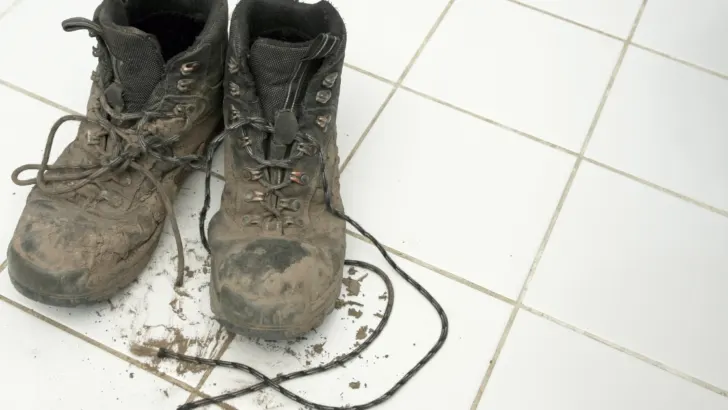
Store Your Boots Properly
Storing your hiking boots properly can also help them last longer. Keep them in a cool, dry place away from direct sunlight. Stuff them with newspaper to help them keep their shape.

Check The Tread Of Your Boots Regularly
The tread of your hiking boots is what provides traction on the trail. Check the tread regularly to ensure it’s not worn down or damaged. Replace your boots if the tread is too worn to provide adequate traction.
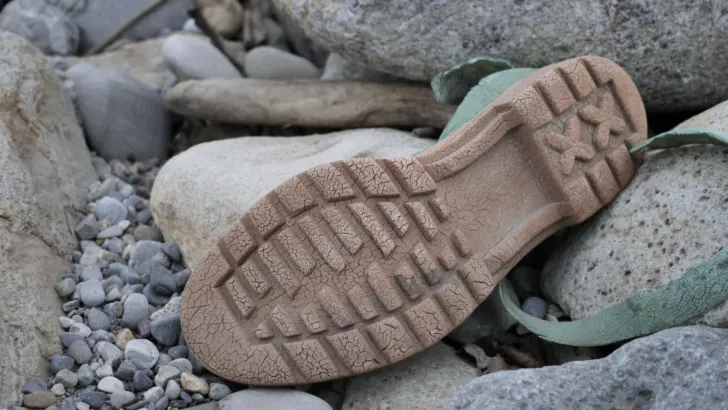
Pay Attention To The Fit Of Your Boots
The fit of your hiking boots is crucial to your comfort and safety on the trail. Make sure your boots fit snugly but not too tight, and that your toes have room to move. If your boots are too loose, your feet can slide around inside them and cause blisters.
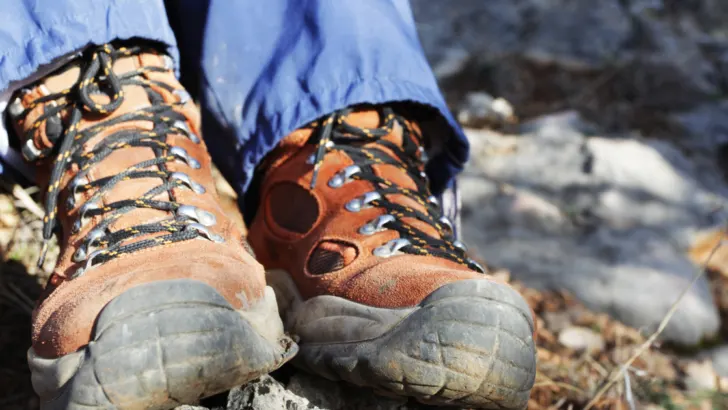
Weigh The Pros And Cons Of Re-Soling Your Boots
If your hiking boots are still in good condition but the soles are worn down, you may be able to have them re-soled. Consider the cost of re-soling versus buying a new pair of boots, and whether the boots are worth the investment.
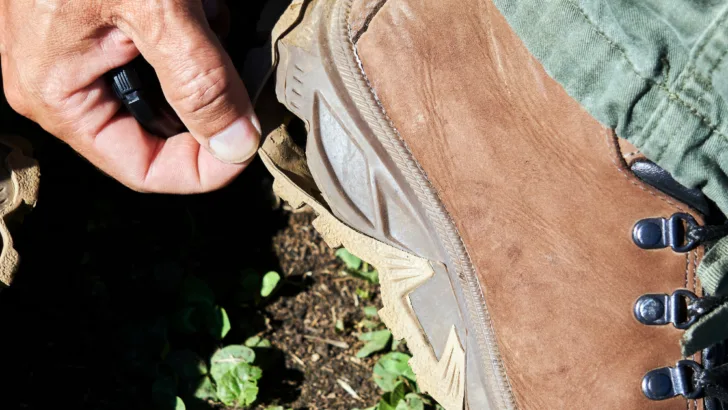
Related Posts:
When To Replace Hiking Boots – Conclusion
It is important to keep in mind that every hiker’s experience is different, and there is no set rule for how often you should replace your boots. However, there are certain signs that you should look out for to determine when it is time for a new pair.
One of the most common signs that it is time to replace your hiking boots is when the tread is worn down. This can lead to a lack of traction, which can be dangerous on steep or slippery terrain. Another sign is when you experience pain in your feet or joints while hiking, which can be a result of worn-out cushioning or lack of support.
Other signs to look out for include worn-out ankle cuffs, uncomfortable fit, worn-out shoelaces, loose stitching, and flat insoles. It is important to pay attention to these signs and replace your boots before they become a safety hazard.
When it comes to replacing your hiking boots, it is important to invest in a high-quality pair that will last for many miles. Look for boots with sturdy construction, good traction, and comfortable cushioning. Remember that proper fit is also crucial for comfort and safety on the trail.
In conclusion, replacing your hiking boots is an important part of staying safe and comfortable on the trail. By paying attention to the signs discussed in this article, you can ensure that your boots are always in good condition and ready for your next adventure.
Frequently Asked Questions
How often should I replace my hiking boots?
The lifespan of hiking boots depends on how often they are used and under what conditions. Generally, you should expect to replace your hiking boots every 500 to 750 miles. However, some people may need to replace their boots sooner if they frequently hike in harsh conditions or have a heavier body weight.
What are the signs that indicate it’s time to replace hiking boots?
There are several signs that indicate it’s time to replace your hiking boots. These include worn-out soles, frayed or worn laces, pain in your feet, ankle cuffs getting worn, and discomfort while wearing them. Additionally, if you’ve had your boots for over a year, it’s a good idea to inspect them for any signs of wear and tear.
How long do hiking boots typically last?
The lifespan of hiking boots varies depending on several factors, such as how often they are used, the type of terrain they are used on, and the weight of the hiker. Generally, hiking boots can last anywhere from 500 to 1500 miles.
What factors affect the lifespan of hiking boots?
Several factors can affect the lifespan of hiking boots. These include the type of terrain they are used on, the weight of the hiker, the frequency of use, and how well they are taken care of. Proper maintenance and care can help extend the lifespan of hiking boots.
Can hiking boots be repaired or resoled instead of replaced?
Yes, hiking boots can be repaired or resoled instead of replaced. However, this depends on the extent of the damage and the type of boots. Some brands offer repair services, while others may require you to take them to a cobbler. It’s important to note that repairs may not always be cost-effective, and it may be more practical to replace your boots.
What are some recommended brands for durable hiking boots?
Some recommended brands for durable hiking boots include Salomon, Vasque, Merrell, Lowa, and Danner. However, it’s important to note that the durability of hiking boots can vary depending on the specific model and how well they are taken care of. It’s always a good idea to do research and read reviews before purchasing a pair of hiking boots.
